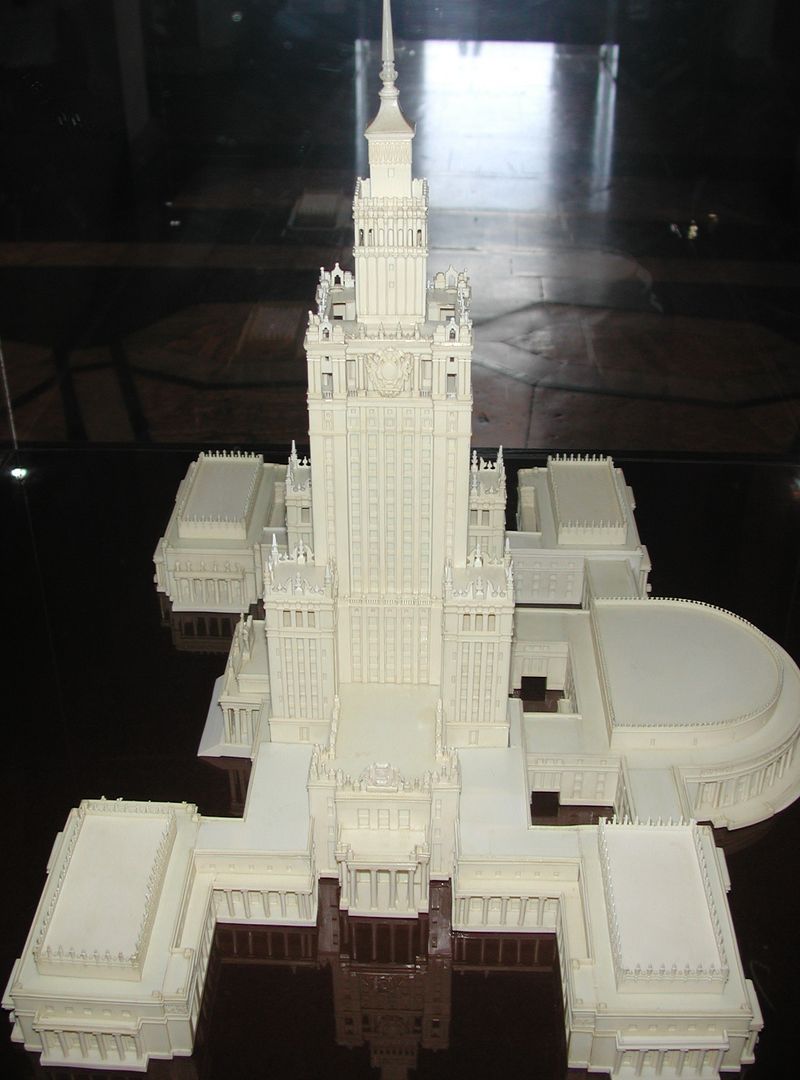Palace of Culture and Science
8.63

Overview
The Palace of Culture and Science (PKiN) in Warsaw, built between 1952 and 1955, is the second tallest building in Poland, standing at 237 meters including its spire. It was constructed as a "gift from the Soviet people to the Polish people," designed by architect Lev Rudnev, who drew inspiration from Moscow's skyscrapers and American Art Deco style. The structure is an example of socialist realism and historicism, with numerous artworks and decorative elements inside. PKiN houses many cultural institutions, including theaters, museums, and conference halls, hosting a variety of events, exhibitions, and fairs. Historically, the palace's construction was tied to significant political turmoil in Poland, and its opening took place during the Stalinist era. After Stalin's death, the building was named after Joseph Stalin, sparking controversy and negative sentiments. In 1956, a series of suicidal jumps from the observation terrace led to the installation of protective bars. Since 2007, PKiN has been listed as a historical monument, a decision that stirred debate among artistic and social circles. Opponents argued that it symbolizes Soviet domination, while supporters emphasized its architectural value and cultural significance in Poland. The palace is home to nesting peregrine falcons, and beehives are located on its roof. PKiN also serves broadcasting functions, transmitting television and radio programs. It is worth noting that the Palace of Culture and Science has frequently appeared in Polish cinema, featuring in numerous films and series, making it an integral part of Warsaw's landscape.
Location
Tickets
Powered by GetYourGuide
You can also find here:
2025 Wizytor | All Rights Reserved



